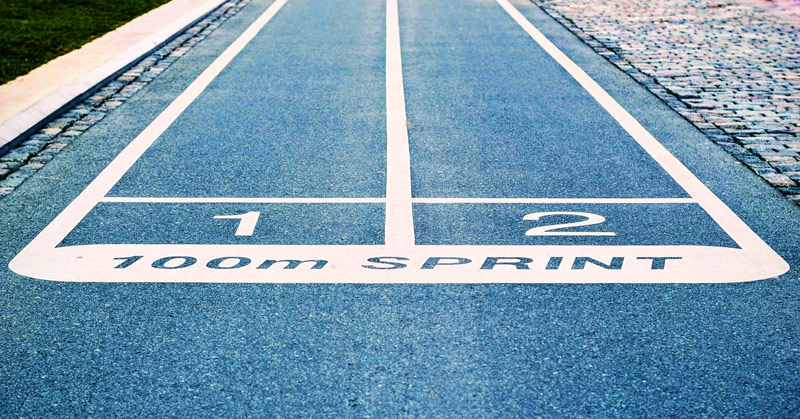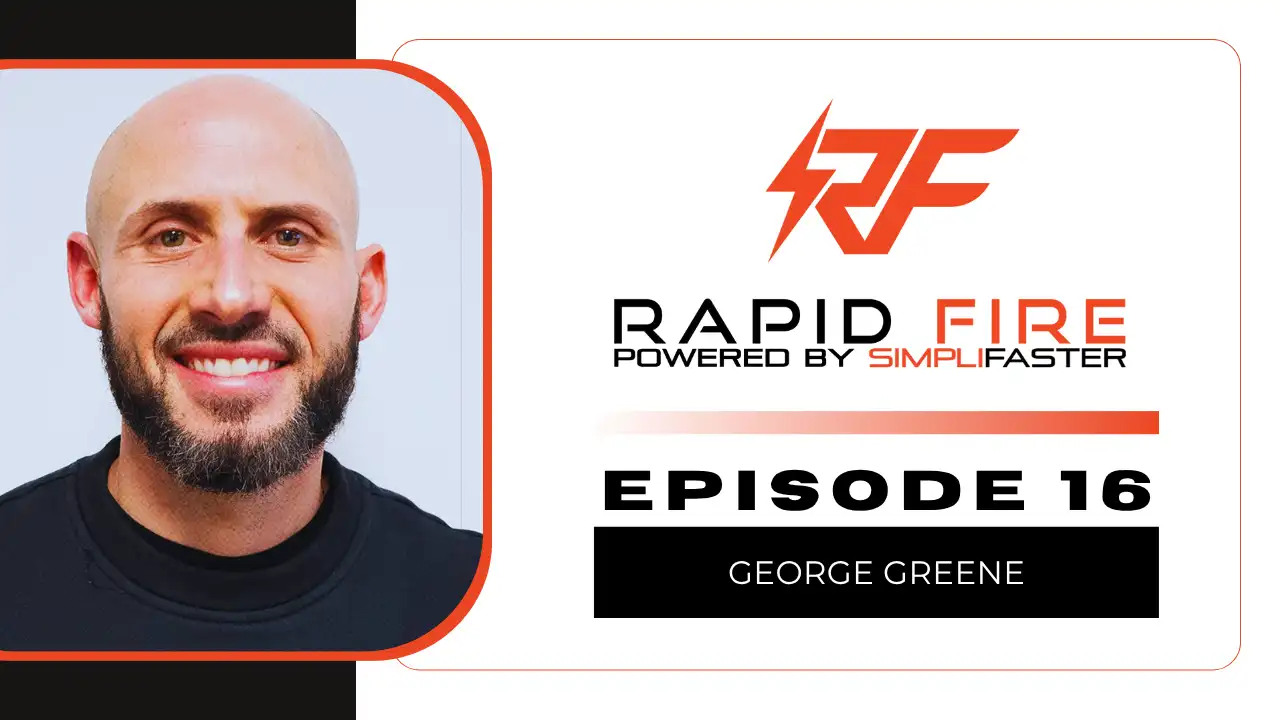[mashshare]

Starting out in the strength and conditioning industry can be a little daunting. You know the basics of physiology and theory, but you haven’t fully discovered the tricks and characteristics that define YOU as a coach. You want to implement the newest program or exercise you’ve seen from texts, videos, or conferences you’ve recently attended. I’m not blaming you; these coaches present a topic to make it look exceptional, and maybe it is. The thing is, not every program, protocol, or exercise will be right for you. There are almost unlimited possibilities and variations when it comes to training your athletes or clients, and experienced coaches have their own unique system.
If you’re a new coach, how do you develop YOUR system?
Your system will be based around the characteristics that you believe are most important in developing athletes. These are the macrocycles, microcycles, little exercises, drills, and progressions that help your athletes achieve the characteristics that you are looking for.
You will figure out the best combinations, loads, and progressions to help you reach these goals for both short-term and long-term clients. These could be things like: how to improve short-term power for jump tests, how to shave some time off a sprint test, or how to improve Olympic lifting or bench press. As a new coach, you may have ideas of what you like, but, realistically, you probably don’t yet have the experience to optimize the achievement of these goals.
Even though you may not have figured out your perfect system or your go-to protocols yet, it doesn’t mean you have to sit and wait. Here are three tips to help you become proactive and build the systems that will work best for you.

Read the Research and Talk to Other Coaches
Getting my first certification through the NSCA gave me an opportunity that many other trainers don’t have—access to journal subscriptions. From my first day as a CPT, I was already getting issues of the Journal of Strength and Conditioning Research and the Strength and Conditioning Journal. In the past eight to ten years as a coach, I’ve realized that most trainers don’t read the research.
Don’t program blindly; use proven protocols to get results. Share on XDo yourself a favor and look through research to find topics that interest you. For me, it was always jump power/height/distance, sprint speed, or power and strength in lifting. Every time I saw a paper on one of these topics, I read about the protocol used. Saving these papers has given me certain protocols that I have experimented with and know are effective. Don’t program blindly; use proven protocols to get results. The point of these studies is to try and isolate variables and experiment with ways to improve them. In my opinion, studies are one of the best ways to figure out your basic characteristics. Next, you need to figure out how to train for them.
The second half of this point relies on the human element. Find other coaches to intern with, talk with, or just watch. Talking to coaches can give you insights that you haven’t discovered yet. You don’t have to follow blindly or take their opinion as gospel, but you can expect that the coach has put time into their ideas and you can continue your research off what they share.

Everyone will have different questions and working with other questions can help you answer questions about data. For me, the first questions I started asking (about speed training), revolved around competition: How early do I taper? What volumes should I use? How much is too much? Since I didn’t start as a track-specific coach, some of these issues helped the way I trained non-track athletes. Fellow coaches and mentors can help you with real-world scenarios.

Collect the Data
The only way to know if something is improving is to track it. When I first started coaching, I focused mainly on the quality of the movement and skill acquisition. I could see my athletes improving, or so I thought. Realistically, I didn’t collect enough data to show if their performance was actually improving.
The more data you collect and the more variables you track, the better you will understand what your program accomplishes. This could be as simple as tracking volume load, ground contacts, and sprint volumes. Pair that with the results of your monitoring or testing and you have some explanations for your results. If you want to get more complex, use athlete questionnaires, HRV, and other tools to monitor recovery. This can give you a read into the way your athletes recover from your programming. You can then either adjust your programming to the athlete or work with the athlete to improve their recovery habits/protocols.
The more data collected & variables tracked, the better you’ll understand what your program achieves. Share on XWhen I started, the tools at my disposal were either out of my reach, due to cost and availability, or very rudimentary, like a stopwatch. There’s nothing wrong with a stopwatch, but we have better options now. For speed, I like using apps like the MySprint App (below) and Coach’s Eye for both technical feedback and force-velocity data, but at a minimum you need to collect sprint times. Whether you use an app on a smartphone or a Freelap system, you need to collect consistent sprint times to know if your athletes are getting faster.


Experiment to See What Works Best
If you’re curious and competitive, you’ll have a million ideas on how to make your athletes just a little bit better. Some of these ideas will be supported by science, but some will be hypothesized from anecdotal information or science that might be loosely related. The only way to know for sure whether it works is to experiment with it. Pick an athlete or a group of athletes and try adjusting their program. Be sure to track their progress so that you know how the adjustments affect them. This will lead to some pretty monumental discoveries.
One of these discoveries came to me just after I’d left university. When I played, it was a given that we followed a four-day per week lifting program. This is old school football mentality—the more the merrier when it comes to moving iron. Due to a busier schedule, my brother and I both dropped down to lifting 3x per week. We were both done with football at this point. What we noticed is that the results seemed to be even better than when we played. After looking at it, I realized that as a University football player, 4x lifting with practices and sprint/plyo sessions was an insane workload when paired with reduced sleep and probably less-than-optimal nutrition. Don’t get me wrong, I was trying to do the right things, but lifestyle and external factors weren’t always in my favor.
For my next group of football players, I dropped to 3x per week lifting. My athletes preferred it, and it was the best coaching decision I’ve made to date. Instead of constantly being overloaded and overreaching, good results came faster. My belief is that the volume was more manageable, increasing the overall quality of the work, as well as the resources available for adaptation.
Don’t Be Afraid to Make Changes
Without experimentation, I might have stuck with the style of programming that I grew up with as an athlete. Instead, I had some great athletes who trusted my judgment and I took a risk. In turn, I made some important discoveries about my ideal programming methods.
As times change, your coaching will evolve and change as well, but you can evolve faster when you have a plan. I’d hate to see you sticking with something in your program that isn’t providing results just because you’re afraid of making a change.
Just like you are in the gym every day tinkering with cueing and technique, there are sports scientists researching different variables. You never know when the next “tool” or idea is going to be discovered. We often hear coaches say that relying on evidence puts you five to ten years behind intuition. If you open your network to the people testing these theories every day, you can start acting on information before a publication finally comes out with that information in print. This can flip that cliché on its head and put you on the cutting edge.
Remember, It’s About Getting Better!
Since you’re here…
…we have a small favor to ask. More people are reading SimpliFaster than ever, and each week we bring you compelling content from coaches, sport scientists, and physiotherapists who are devoted to building better athletes. Please take a moment to share the articles on social media, engage the authors with questions and comments below, and link to articles when appropriate if you have a blog or participate on forums of related topics. — SF
[mashshare]




